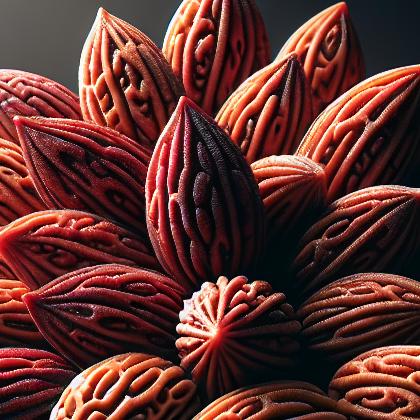Bitter Almond

The almond (Prunus dulcis, syn. Prunus amygdalus, Amygdalus communis, Amygdalus dulcis) (or badam in Indian English, from Persian: بادام) is a species of tree native to the Middle East and South Asia. "Almond" is also the name of the edible and widely cultivated seed of this tree. Within the genus Prunus, it is classified with the peach in the subgenus Amygdalus, distinguished from the other subgenera by the corrugated shell (endocarp) surrounding the seed.The fruit of the almond is a drupe, consisting of an outer hull and a hard shell with the seed (which is not a true nut) inside. Shelling almonds refers to removing the shell to reveal the seed. Almonds are sold shelled (i.e., after the shells are removed), or unshelled (i.e., with the shells still attached). Blanched almonds are shelled almonds that have been treated with hot water to soften the seedcoat, which is then removed to reveal the white embryo.
Bitter almond Pairs With:
Bitter almond Properties:
| Food Property | Type | Description |
|---|---|---|
| Flavor Profile | Bitter | Bitter almonds have a strong bitter taste due to the presence of amygdalin, a compound that releases cyanide when metabolized. |
| Texture | Firmness | Bitter almonds have a firm texture similar to regular almonds, but the bitterness may affect the overall mouthfeel. |
| Nutritional Value | Macronutrients | Bitter almonds contain macronutrients such as protein, fat, and carbohydrates like regular almonds, but in lower quantities. |
| Micronutrients | Bitter almonds may still contain micronutrients like vitamins and minerals present in regular almonds, but the bitter taste may deter consumption. |
Food Pairing App - Version 1.2.0
